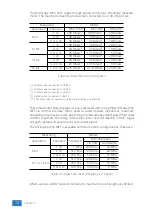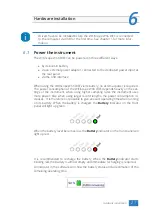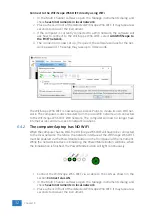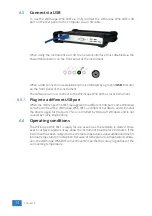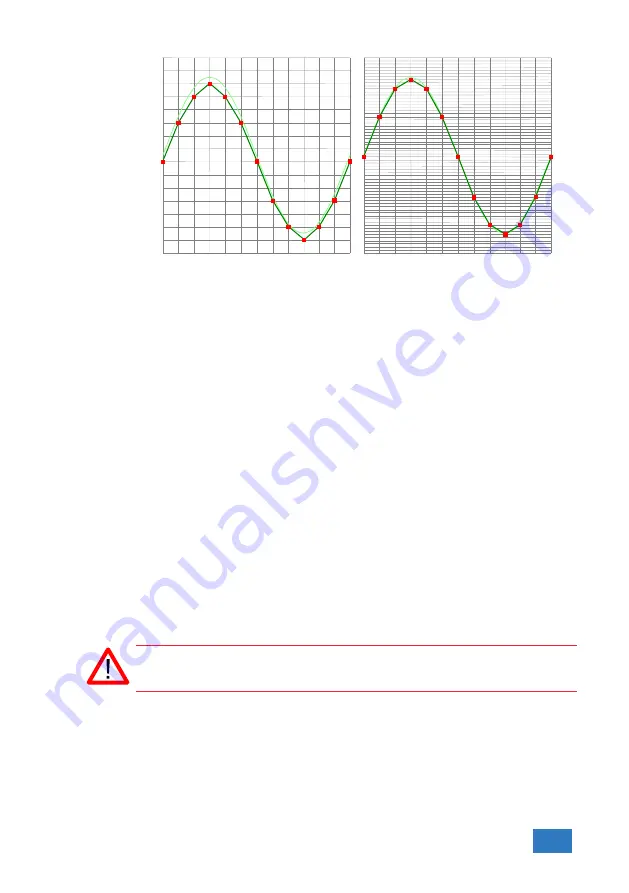
Figure 4.12: The effect of the resolution
The WiFiScope WS6 DIFF measures at e.g. 14 bit resolution (
2
14
=16384 levels). The
smallest detectable voltage step depends on the input range. This voltage can be
calculated as:
V oltageStep
=
F ullInputRange
/
LevelCount
For example, the 200 mV range ranges from -200 mV to +200 mV, therefore the
full range is 400 mV. This results in a smallest detectable voltage step of 0.400 V /
16384 = 24.41
µ
V.
4.5
Signal coupling
The WiFiScope WS6 DIFF has two different settings for the signal coupling: AC and
DC. In the setting DC, the signal is directly coupled to the input circuit. All signal
components available in the input signal will arrive at the input circuit and will be
measured.
In the setting AC, a capacitor will be placed between the input connector and the
input circuit. This capacitor will block all DC components of the input signal and
let all AC components pass through. This can be used to remove a large DC com-
ponent of the input signal, to be able to measure a small AC component at high
resolution.
When measuring DC signals, make sure to set the signal coupling of the
input to DC.
4.6
Probe compensation
When the inputs of the WiFiScope WS6 DIFF are switched to single-ended (
Safe
Ground
enabled), standard X1 / X10 attenuating oscilloscope probes can be used. These
are 1x/10x selectable passive probes. This means that the input signal is passed
through directly or 10 times attenuated.
Introduction
19
Summary of Contents for WiFiScope WS6
Page 1: ...WiFiScope WS6 DIFF User manual USB Network WiFi Battery power TiePie engineering...
Page 6: ...IV...
Page 8: ...2 Chapter 1...
Page 10: ......
Page 14: ...8 Chapter 3...
Page 27: ...Figure 4 15 over compensated Introduction 21...
Page 28: ...22 Chapter 4...
Page 31: ...Figure 5 3 Driver install Finished Driver installation 25...
Page 32: ...26 Chapter 5...
Page 58: ...TiePie engineering WiFiScope WS6 DIFF instrument manual revision 2 27 February 2020...






